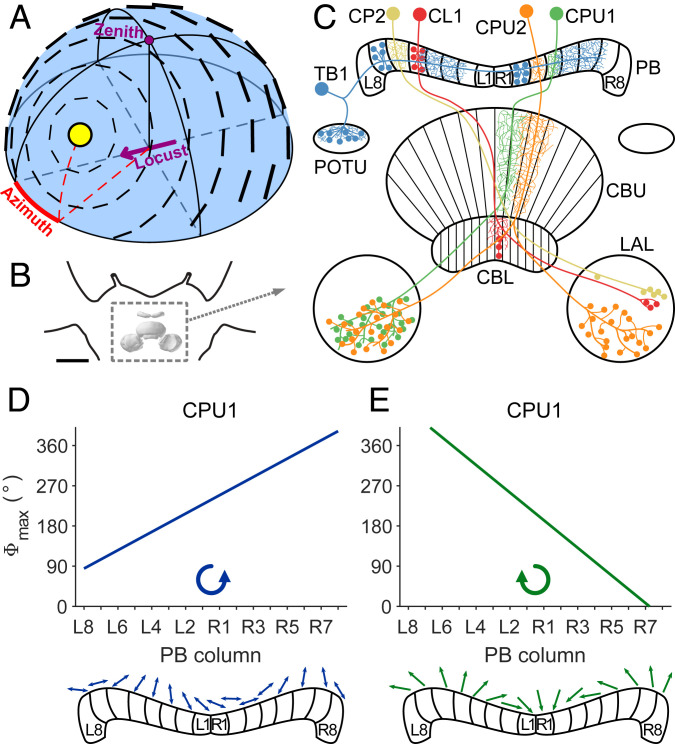Fig. 1.
Celestial compass cues and compass coding in the CX. (A) Schematized polarization pattern of the sky as produced by the sun at 40° elevation and 30° azimuth relative to an observer indicated by the purple arrow. Bar orientation and thickness indicate AoP and degree of polarization, respectively. (B) Frontal diagram of the locust brain indicating the location of the CX (boxed in dashed lines). Reprinted by permission from ref. 63, Springer Nature: Cell and Tissue Research, copyright (2008). (C) Schematic drawing of the locust CX with cell types investigated in this study. Fine branches indicate smooth (dendritic) arborizations, small dots symbolize varicose (presynaptic) arborizations, and large dots represent somata. Columnar neurons (CL1, CP2, CPU1, and CPU2) exist as isomorphic sets of 16 neurons, covering all 16 columns of the PB. Tangential neurons (TB1) exist as four subtypes per brain hemisphere, each having varicose ramifications in two columns that are eight columns apart. (D and E) Topographic representation of AoP to zenithal stimulation with blue polarized light (D) and azimuth of a green LED (E) in the same set of CPU1 neurons innervating different columns of the PB. The tuning to AoP changes from L8 to R8 in counterclockwise manner (D, Bottom), and the azimuth tuning changes in clockwise fashion (E, Bottom). CBL, lower division of the central body; CBU, upper division of the central body; L1 and L8, innermost, respectively outermost column in the left hemisphere of the PB; LAL, lateral accessory lobe; POTU, posterior optic tubercle; R1 and R8, innermost, respectively outermost column in the right hemisphere of the PB. CX model in B is after ref. 63, visualized with insectbraindb.org. C, D, and E reprinted from ref. 29, which is licensed under CC BY 4.0.

